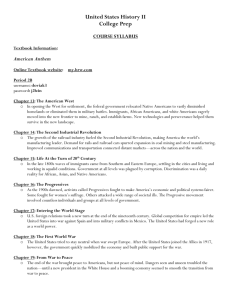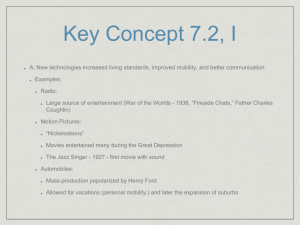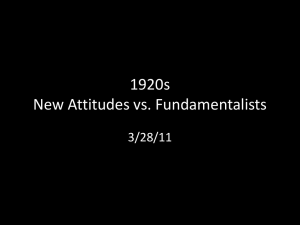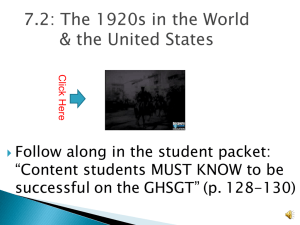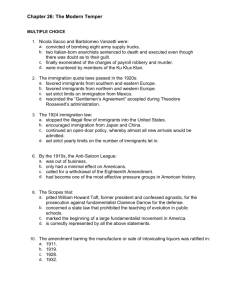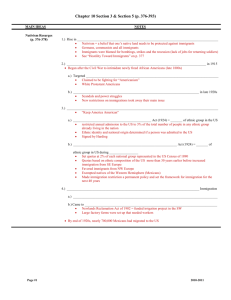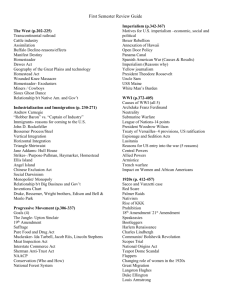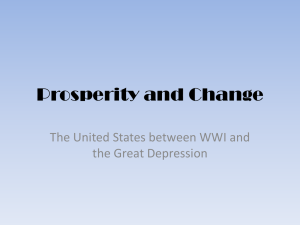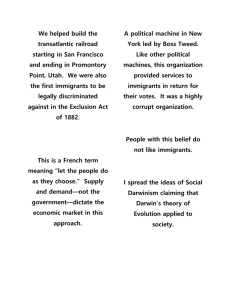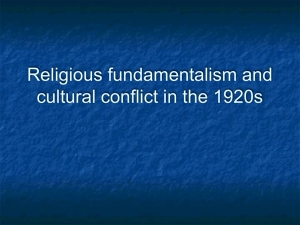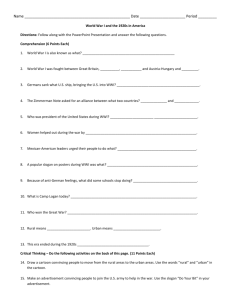UNIT 7A Essential Questions 1898-1920s
advertisement
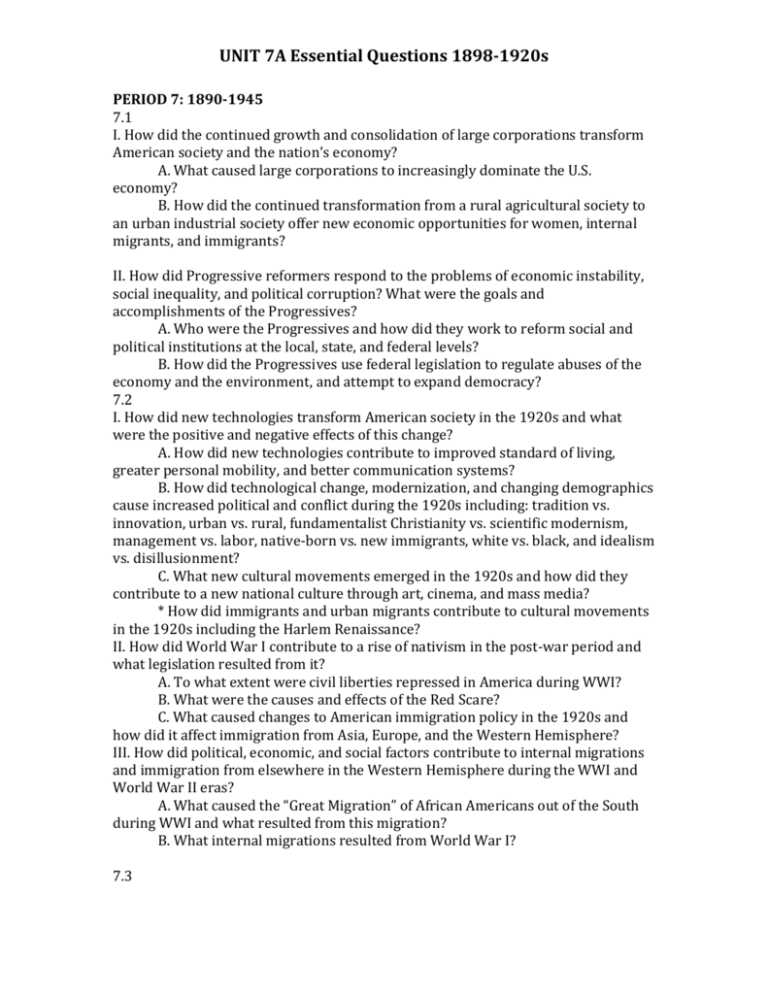
UNIT 7A Essential Questions 1898-1920s PERIOD 7: 1890-1945 7.1 I. How did the continued growth and consolidation of large corporations transform American society and the nation’s economy? A. What caused large corporations to increasingly dominate the U.S. economy? B. How did the continued transformation from a rural agricultural society to an urban industrial society offer new economic opportunities for women, internal migrants, and immigrants? II. How did Progressive reformers respond to the problems of economic instability, social inequality, and political corruption? What were the goals and accomplishments of the Progressives? A. Who were the Progressives and how did they work to reform social and political institutions at the local, state, and federal levels? B. How did the Progressives use federal legislation to regulate abuses of the economy and the environment, and attempt to expand democracy? 7.2 I. How did new technologies transform American society in the 1920s and what were the positive and negative effects of this change? A. How did new technologies contribute to improved standard of living, greater personal mobility, and better communication systems? B. How did technological change, modernization, and changing demographics cause increased political and conflict during the 1920s including: tradition vs. innovation, urban vs. rural, fundamentalist Christianity vs. scientific modernism, management vs. labor, native-born vs. new immigrants, white vs. black, and idealism vs. disillusionment? C. What new cultural movements emerged in the 1920s and how did they contribute to a new national culture through art, cinema, and mass media? * How did immigrants and urban migrants contribute to cultural movements in the 1920s including the Harlem Renaissance? II. How did World War I contribute to a rise of nativism in the post-war period and what legislation resulted from it? A. To what extent were civil liberties repressed in America during WWI? B. What were the causes and effects of the Red Scare? C. What caused changes to American immigration policy in the 1920s and how did it affect immigration from Asia, Europe, and the Western Hemisphere? III. How did political, economic, and social factors contribute to internal migrations and immigration from elsewhere in the Western Hemisphere during the WWI and World War II eras? A. What caused the “Great Migration” of African Americans out of the South during WWI and what resulted from this migration? B. What internal migrations resulted from World War I? 7.3 UNIT 7A Essential Questions 1898-1920s I. What were the arguments in favor of territorial expansion in the Western Hemisphere and the Pacific in the late 19th century? A. What drove the United States to become an imperial power at the end of th the 19 century? (closed frontier, European competition, racial theories, expand culture) * What caused the United States to declare war on Spain in 1898? B. What were the significant political, economic and diplomatic impacts of the American victory in the Spanish-American War? C. How did American Imperialism cause a debate over America’s role in the world, and what were the main imperialist and anti-imperialist arguments, and later interventionists and isolationists? II. How did World War I intensify debates over America’s role in the world and the balance between national security and pursuing American interests? A. What caused the United States to abandon neutrality and enter World War I in 1917? (Wilson’s defense of humanitarian and democratic principles) B. What were the key provisions of the Treaty of Versailles, and why did the Treaty including the League of Nations generate substantial debate in the United States?

